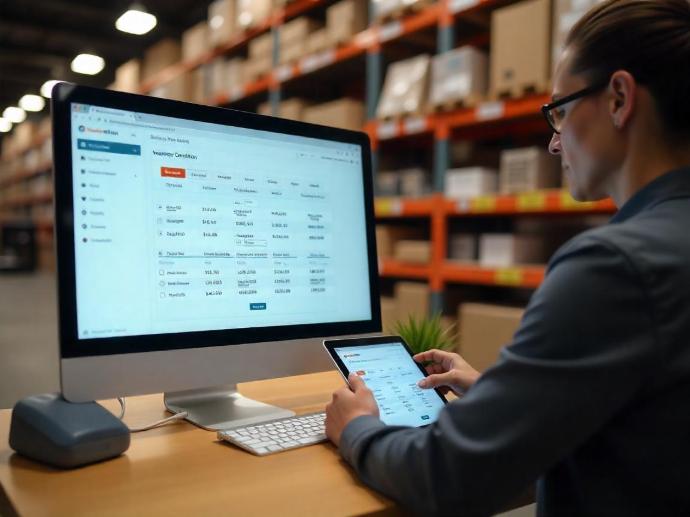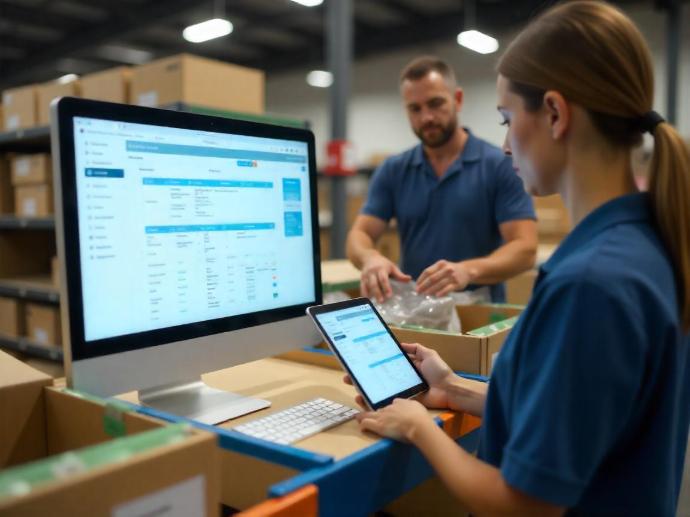Odoo Implementation For Inventory Management in a Thrift Store
40%
Faster inventory intake
35%
reduction in manual data entry effort
50%
improvement in reporting efficiency
30%
increase in inventory turnover rate
About Thrift Store
Thrift stores like Goodwill and others have a special inventory management
challenge based on the type of supply chain they have. In contrast to standard
retail businesses that purchase standardized items from suppliers, thrift stores
depend on donations, so inventory is extremely volatile in terms of quantity,
variety, and condition. This case study examines how a thrift store in the USA was able to
effectively implement Odoo, an open-source Enterprise Resource Planning
system, to automate its inventory management functions and address such
issues.

Challenges of Thrift Store in Inventory Management
Unstructured & Non-Standardized Inventory
Thrift stores are faced with an ever-changing inventory of items, ranging
from clothing to electronics, books, and domestic goods. Unlike in regular
retail, where the SKUs are already determined, thrift stores have to deal with
a high level of item variation with specific characteristics (e.g., size, color,
brand, condition). The absence of standardization makes categorization
and tracking of inventories difficult.
Frequent Product Onboarding & Categorization
Daily, the store gets single-occasion items that might not have an existing
SKU in stock. It's time-consuming and inefficient to add new product entries
manually in Odoo for each donation. Others might already be in the catalog,
and an automatic matching mechanism would prevent duplications.
Donation Processing Workflow
Donated items undergo a multi-stage process, including sorting, cleaning,
labeling, and pricing, before they are put up for sale. The system needs to
monitor the movement of items from donation centers to stores and
possibly to e-commerce sites.
Condition-Based Categorization
Each product's condition needs to be tracked by the thrift stores since it
directly determines pricing and stocking. Typical condition categories are:
Like New (very little use, nearly new condition)
Gently Used (light wear but fully functional)
Usable (wear is visible but still functional)
Poor Condition (damaged, limited functionality)
Get FREE Consultation
Custom Implementation in Odoo To Suite Thrift Store
To tackle these issues, the thrift store adopted a tailored Odoo solution with the
following functionalities:

1. Automated SKU Creation & Matching
○ A clever categorization system was used to suggest or match received products with current inventory SKUs.
○ If a match is not found, an expedited product creation wizard reduces
manual labor, enabling employees to onboard new items effectively.

2. Condition-Based Inventory Valuation
○ An attribute-based categorization system was implemented to monitor item conditions (e.g., Like New, Gently Used).
○ This system dynamically fluctuates prices and inventories based on
the condition of each product.

3. Donation Workflow Automation
○ Odoo implemented an efficient intake process to monitor, sort, and label received donations.
○ The system guarantees each product is processed optimally, from
donation points to store shelves or online websites.

4. Barcode & RFID Integration
○ Barcode labels were printed on products at the sorting point to accurately track inventory.
○ This integration eliminated errors and enhanced inventory
management speed.

5. E-Commerce & POS Integration
○ Inventory was synchronized with online thrift stores (e.g., Shopify, WooCommerce, eBay, Poshmark).
○ Odoo POS was connected for store-level transactions to reflect
real-time inventory levels in all sales channels.
Key Business Benefits Witnessed By Thrift Store After Odoo Implementation
The deployment of Odoo provided immense benefits to the thrift store, such as:
Faster Inventory Intake
Automated sorting and matching cut donation processing time, allowing for
quicker product turnaround.
Reduced Manual Effort
Barcode integration and the quick product creation wizard reduced manual
data entry, leaving staff more time for other activities.
Better Sales Tracking
Integrated POS and e-commerce systems offered real-time sales
information, enhancing decision-making and stock planning.
Accurate Pricing & Valuation
Condition-based sorting allowed items to be correctly priced, optimizing
revenue while ensuring customer satisfaction.
Enhanced Reporting
The system generated in-depth reports on donor tracking, sales
performance, and stock movement, which allowed the store to maximize
operations and enable its philanthropic purpose.
Let’s Build a Smarter Thrift Store Together!
Contact us today to discuss how Odoo can help you achieve your goals.
Conclusion
Through a custom Odoo solution, the thrift shop was able to reform its inventory
management procedures, defying the inherent challenges of processing donated
items. The system became more efficient, minimized manual intervention, and
produced accurate data to inform more informed decision-making. Consequently,
the store managed to boost revenue, sustain its charity mission, and offer a
greater experience for customers and donors.